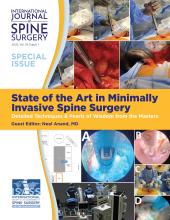ABSTRACT
Background Over the last several decades, various osteobiologics including allograft, synthetics, and growth factors have been used for lumbar spinal fusion surgery. However, the data on these osteobiologic products remain controversial with conflicting evidence in the literature. This study evaluates the influence of osteobiologic type selection on perioperative complications and hospital-reported charges in single-level and multilevel lumbar fusion.
Methods Using the 2016 and 2017 Nationwide Readmission Database, we conducted a retrospective cohort analysis of 125,143 patients who received lumbar fusion with either autologous tissue substitute, nonautologous tissue substitute, or synthetic substitute. This cohort was split into single-level and multilevel fusion procedures, and one-to-one age and sex propensity score matching was implemented. This resulted in cohorts each consisting of 1967 patients for single-level fusion, and cohorts each consisting of 1657 patients for multilevel fusion. Statistical analysis included one-way analysis of variance and Tukey multiple comparisons of means.
Results Autologous single-level fusion resulted in significantly more postoperative pain at 30-, 90-, and 180-day follow-up compared to fusion with nonautologous graft (P < .05). Multilevel fusion with autologous graft had higher rates of acute postsurgical anemia compared with synthetic (P = .021) and nonautologous (P = .016) alternatives, and less postsurgical infection when compared with nonautologous fusion (P = .0020). In addition, procedures using autologous osteobiologics were associated with significantly more neurological complications at 30 days (P = .049) and 90 days (P = .048) for multi-level fusion and at 30 days (P = .044) for single-level fusion compared with the nonautologous group. Lastly, for both cohorts, the total accrued inpatient hospital charges during admission for patients receiving nonautologous grafts were the most expensive and those for patients receiving autologous grafts were the least expensive.
Conclusion Significant differences were found between the groups with respect to rates of complications, including infection, postoperative pain, and neurologic injury. Furthermore, the hospital-reported charges of each procedure varied significantly. As the field of biologics continues to expand, it is important to continually evaluate the safety, efficacy, and cost-effectiveness of these novel materials and techniques.
Level of Evidence 3
Clinical Relevance With increased utilization of osteobiologics and spinal fusion being a common procedure, longitudinal data on readmissions, and post-operative complications are critical in guiding evidence-based practice.
Footnotes
Disclosures and COI: There are no conflicts of interest in this study. There are also no disclosures of funding for this study. No patient identifiers were collected. Disclosures outside of submitted work: JCW: Royalties—Biomet, SeaSpine, Amedica, Synthes; Investments/Options—Bone Biologics, Pearldiver, Electrocore, Surgitech; Board of Directors—AO Foundation, Society for Brain Mapping and Therapeutics, American Orthopaedic Association; Editorial Boards—Spine, The Spine Journal, Clinical Spine Surgery, Global Spine Journal; Fellowship Funding (paid to institution): AO Foundation; ZB: Consultancy—Cerapedics (past), The Scripps Research Institute (past), Xenco Medical (past), AO Spine (past); Research Support—SeaSpine (past, paid to the institution), Next Science (paid directly to institution), Motion Metrics (paid directly to institution); North American Spine Society—committee member; Lumbar Spine Society—Co-chair Education committee, AO Spine Knowledge Forum Degenerative: Associate member; AOSNA Research committee—committee member.
- This manuscript is generously published free of charge by ISASS, the International Society for the Advancement of Spine Surgery. Copyright © 2021 ISASS







